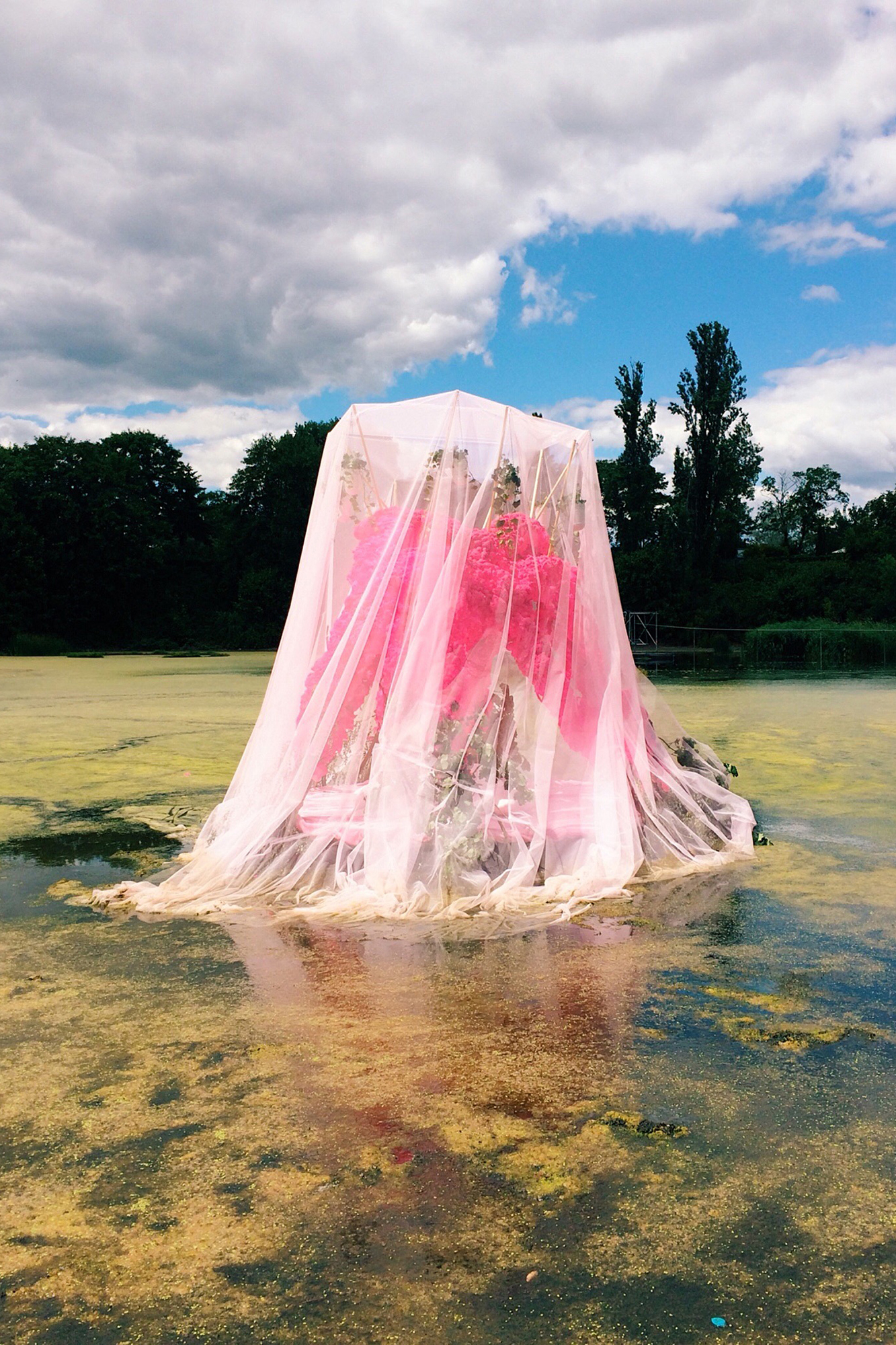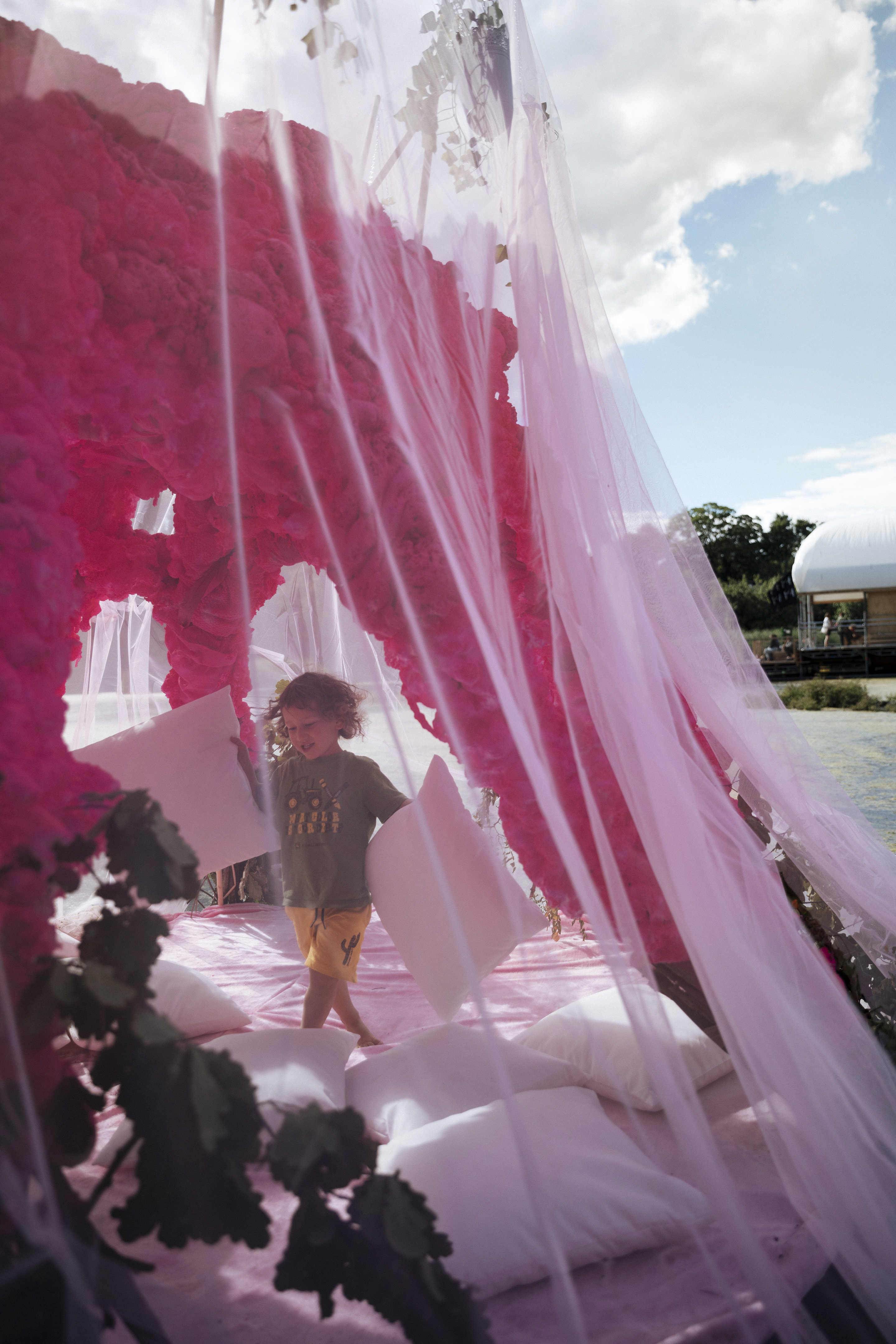Love Aviary
Berlin, 2018
Due to the increasing instability of temperatures caused by Climate Change, some species of birds are changing their reproductive habits, both in the frequency of mating and in “loyalty” to their partners, in some cases exceeding the “limits” of gender in their reproductive practices, to increase, not only the possibility of birth of new members but also of seeking new sexual profiles for the evolution of their species and adaptation to new climatic conditions.
This phenomenon is known as “Ecological Crossover”.
The intervention at the Floating University takes this phenomenon as a starting point to rethink, from architecture, how we can approach the new scenarios established by the Anthropocene in a time where environment, climate, productivity, nature, gender, or culture are constantly and reciprocally.
On the Floating University lagoon, the construction of a cohabitation space is proposed through the assembly of low-cost materials and technologies that allow us to generate a space of coexistence between humans and the members of the natural-cultural ecosystem of the lagoon. from the old Templehoff airport. A series of textile filters modify the temperature of this soft, circular space, making it habitable day and night. This chamber is used to rest, relax, sleep, or have sex in addition to nourishing the species of the ecosystem with the necessary conditions of water, food, and climate to accommodate them.
This phenomenon is known as “Ecological Crossover”.
The intervention at the Floating University takes this phenomenon as a starting point to rethink, from architecture, how we can approach the new scenarios established by the Anthropocene in a time where environment, climate, productivity, nature, gender, or culture are constantly and reciprocally.
On the Floating University lagoon, the construction of a cohabitation space is proposed through the assembly of low-cost materials and technologies that allow us to generate a space of coexistence between humans and the members of the natural-cultural ecosystem of the lagoon. from the old Templehoff airport. A series of textile filters modify the temperature of this soft, circular space, making it habitable day and night. This chamber is used to rest, relax, sleep, or have sex in addition to nourishing the species of the ecosystem with the necessary conditions of water, food, and climate to accommodate them.
Architects:
TAKK, Mireia Luzárraga + Alejandro Muiño
Client:
Floating University
Curator:
Rosario Talevi, Marcus Bader
Photo:
Takk
TAKK, Mireia Luzárraga + Alejandro Muiño
Client:
Floating University
Curator:
Rosario Talevi, Marcus Bader
Photo:
Takk
.





